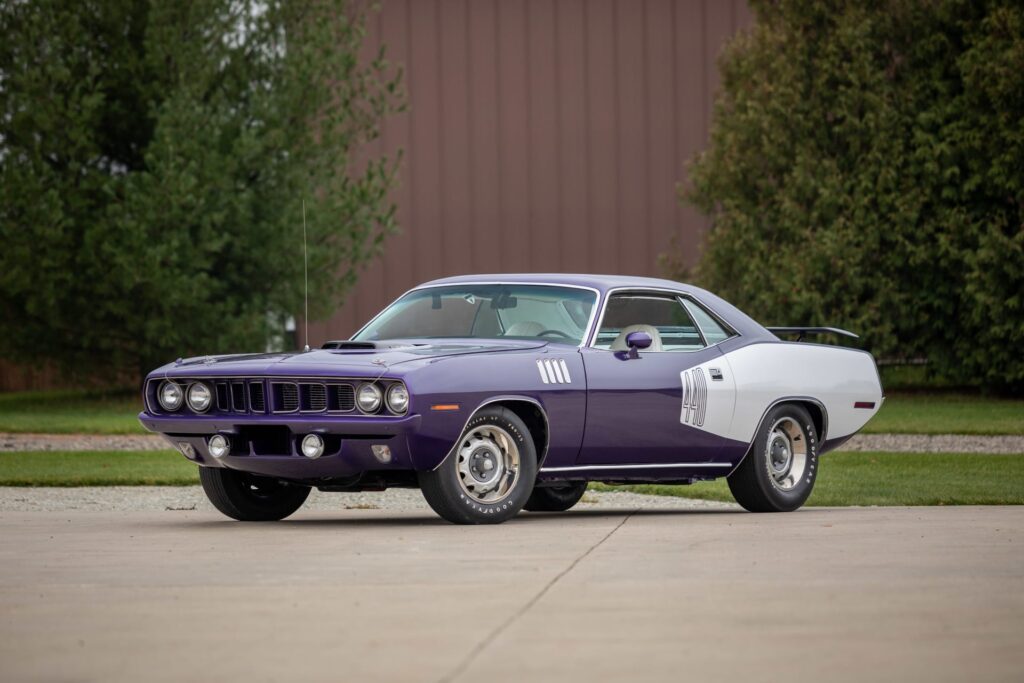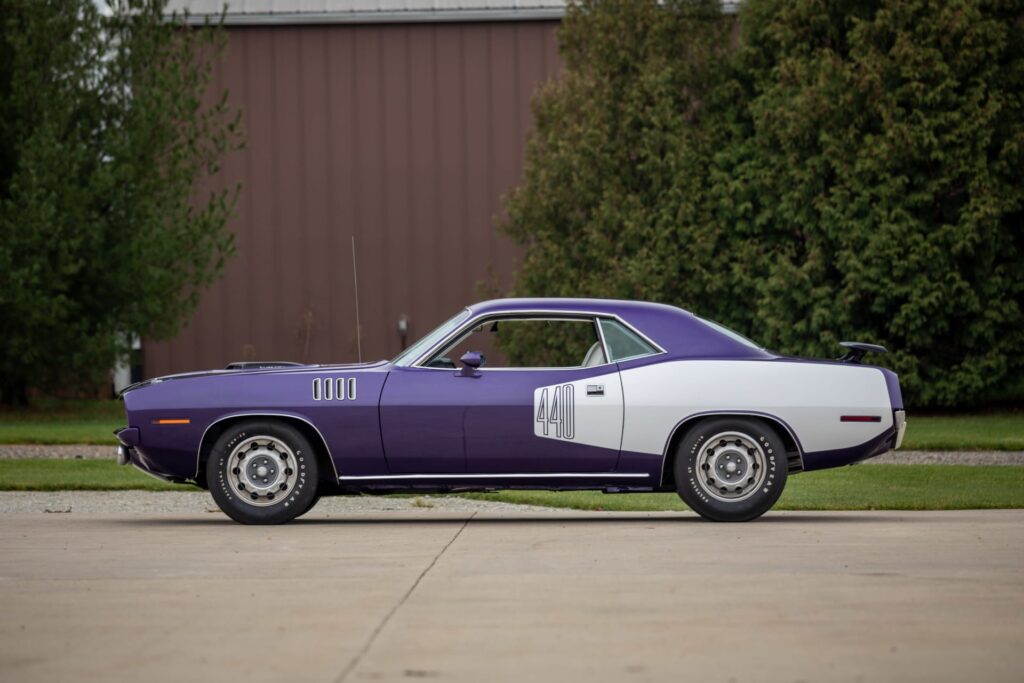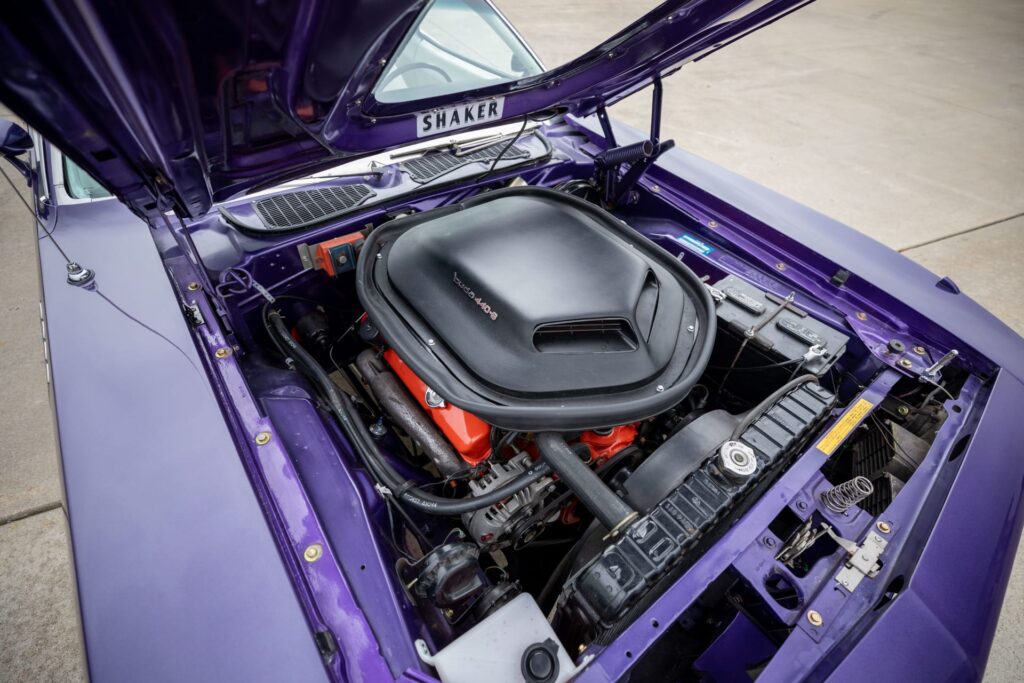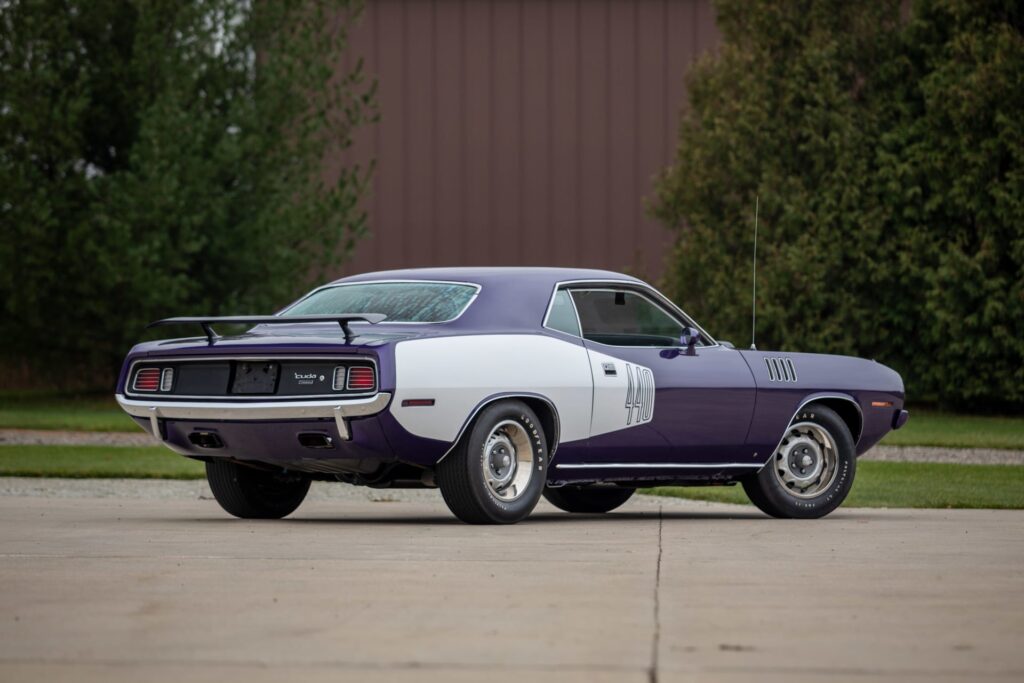The 1971 Plymouth ‘Cuda, a standout in the muscle car era, was the final iteration of the Barracuda’s third generation (1970–1974) and is celebrated for its bold styling, high-performance options, and cultural legacy. Built on Chrysler’s E-body platform, the ‘Cuda was the sportier, performance-oriented version of the Barracuda, designed to compete with heavyweights like the Ford Mustang Mach 1 and Chevrolet Camaro Z/28.

Design and Styling
The 1971 ‘Cuda sported an aggressive, muscular look that epitomized the era’s design ethos. Its wide stance, long hood, and short deck gave it a predatory profile. Distinctive features included:
- Grille and Front End: A bold, four-headlight grille with a shaker hood option (a functional air intake that vibrated with the engine) screamed performance.
- Billboard Graphics: Optional massive side decals with “Plymouth” or “’Cuda” lettering, unique to 1971, made it visually unforgettable.
- Colors and Aesthetics: Vibrant “High Impact” paint colors like Sassy Grass Green, Curious Yellow, and Plum Crazy Purple, paired with wild interior patterns, captured the era’s flamboyance.
- Body Details: Chrome trim, rear spoilers, and hockey-stick stripes added flair, while the optional Elastomeric colored bumpers were a quirky touch.

Performance and Engine Options
The ‘Cuda was a beast under the hood, offering a range of V8 engines to suit different budgets and performance needs:
- 340 V8: A high-revving small-block producing 275 horsepower, ideal for agility.
- 383 V8: A big-block with 300 horsepower, balancing power and drivability.
- 440 V8: Available in two forms—375 horsepower (four-barrel) or 385 horsepower (Six-Pack with three two-barrel carburetors)—for serious grunt.
- 426 Hemi: The legendary 425-horsepower Hemi V8, a rare and expensive option (only 115 Hemi ‘Cudas were built in 1971), was the king of the lineup, capable of quarter-mile times in the low 13-second range.
Transmission choices included a three-speed or four-speed manual or a three-speed TorqueFlite automatic, with power sent to a heavy-duty rear axle. The ‘Cuda’s suspension, with optional heavy-duty components, provided decent handling for a car of its size, though its weight (around 3,600–3,800 pounds) prioritized straight-line speed.

Variants and Special Editions
- ‘Cuda Convertible: One of the rarest muscle cars, with only 374 built in 1971 (including just 17 with the Hemi). Its rarity makes it a holy grail for collectors.
- AAR ‘Cuda: Though more prominent in 1970, some 340-powered models carried over, tuned for Trans-Am racing homologation.
- Hemi ‘Cuda: The ultimate status symbol, with brutal acceleration and a reputation that endures in car culture.
Cultural Impact and Decline
The 1971 ‘Cuda arrived at the peak of the muscle car era, but it faced challenges. Rising insurance costs, stricter emissions regulations, and the 1973 oil crisis began stifling high-performance cars. Chrysler detuned engines after 1971, making the ‘71 models some of the last true fire-breathers. Its bold design and raw power cemented its status as an icon, appearing in media like the TV show Nash Bridges and video games like Gran Turismo.

Collectibility and Legacy
Today, the 1971 Plymouth ‘Cuda is among the most coveted muscle cars. Hemi convertibles have sold at auction for over $3 million, with even base models fetching six figures in good condition due to their rarity and nostalgia. Only about 12,000 ‘Cudas were produced in 1971, with Hemi and convertible variants being exceptionally scarce.The ‘Cuda represents the muscle car era’s zenith—unapologetically loud, fast, and in-your-face. Its blend of outrageous style and tire-shredding performance ensures its place in automotive history as a symbol of American excess and ingenuity.


